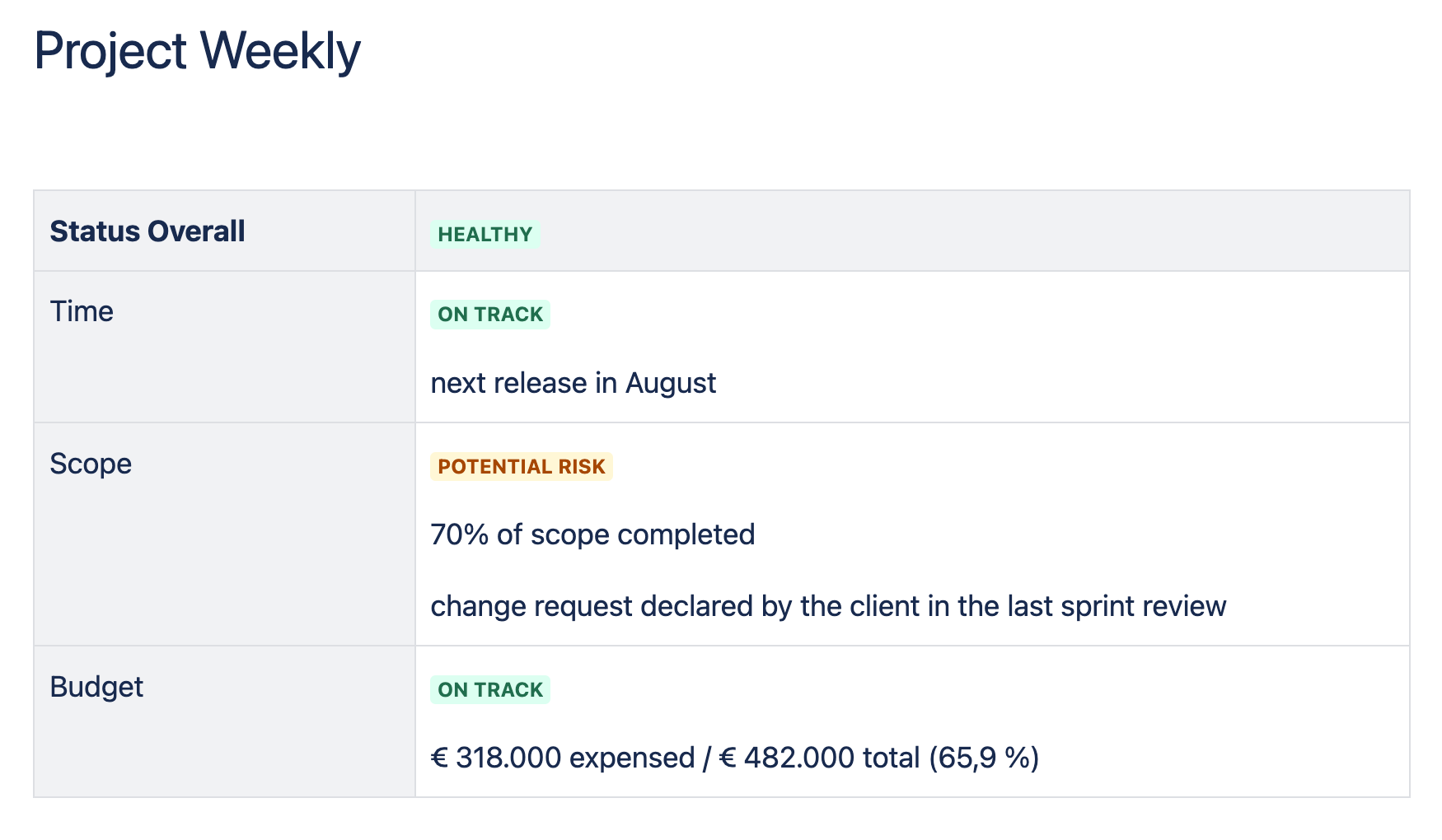Have you heard about the term Watermelon Project? It describes something that occurs in many organizations dealing with project-based work. So let's get into it.
Project status
In update meetings, weekly check-ins or steering committees, the current project status is often described by a traffic light indicator. A green status means everything is on track with the plan, while red means that there are major risks or roadblocks ahead.

So what about the watermelon?
A watermelon project is green on the outside but red on the inside. In terms of project status, that means on the first glance, it seems like everything is alright and the project manager tries to maintain that impression towards the stakeholders. But if you look beneath the surface you can observe huge problems. The project is actually red and eventually it will become obvious.

Tell me why [does it happen]?
It is clear that a watermelon project is not great, but why could it happen anyway? There are a variety of reasons:
- Uncertainty and 90% syndrome:
As time passes in a project, some issues might appear that haven't been clear from the beginning. For example, the project could be based on assumptions that turn out to be incorrect later on.
An extreme case of this problem is called the 90% syndrome. It describes the issue that for the first 90% it looks like the project is making good progress, but when it comes to the last 10% there are horrendous delays. In software projects, this happens when the integration of components is done too late or when the chosen architecture is not suited for the project and has to be changed mid-project. - Lack of communication:
When there is no regular communication of the project status, problems will be noticed too late. Common tools to prevent this are regular update meetings or project dashboards that make the current status apparent to everyone. - Fear of negative consequences:
Maybe there is regular communication but the PM is reluctant to openly share the real project status anyway, because they want to maintain a good image or fear negative consequences. These could be coworkers or managers questioning their competency, not receiving a promotion or bonus - or even worse - the risk of losing the job. Psychological safety is needed to create a trusted environment where bad news are shared and not hidden. - Subjective assessment:
The project manager could also be very excited about the project and a bit over-optimistic for the situation. For example, they expect open issues to be solved soon or simply underestimates risks.
What we can do to prevent it:
Now what can you do to avoid watermelon projects in your organization?
- Communicate early and manage risks:
Make your watermelon project a strawberry project instead - red on the inside and also on the outside. If there are major risks or the project is already unhealthy, communicate it early, explain the risks you identified and what can be done to mitigate them. And by taking appropriate measures early, it will hopefully become green again 🍏 - Back the status by data and KPIs:
To avoid subjective evaluations, back your project indicators by data and KPIs. Numbers and charts don't lie. When talking about budget status, ask for the numbers. How much money has already been spent, how much is the planned total budget? Compare these numbers with the completion status - are both KPIs aligned or are they drifting apart? For more advanced reporting, take a look at Earned Value Management, which provides ways to calculate the chances your project will be completed in time and in budget.


Good luck for your upcoming projects!
